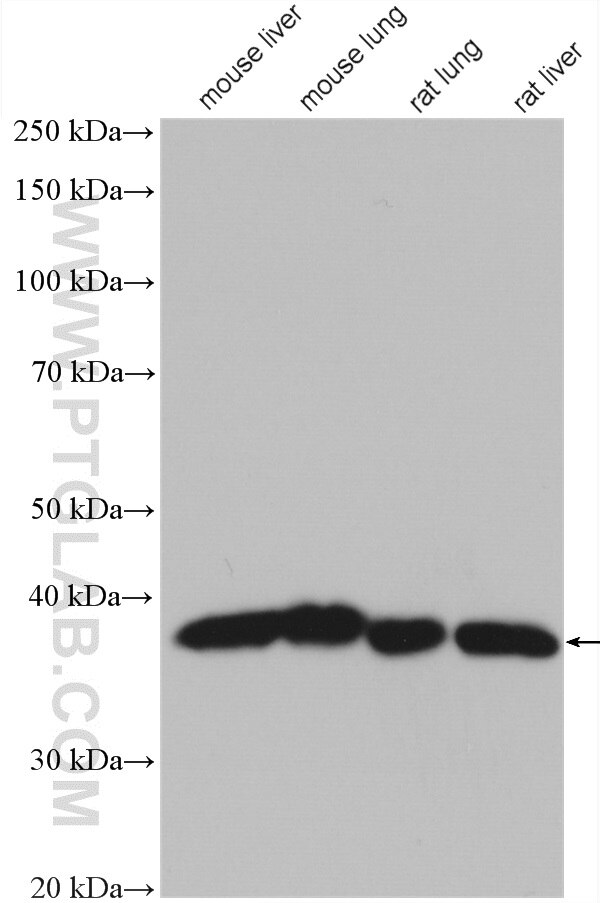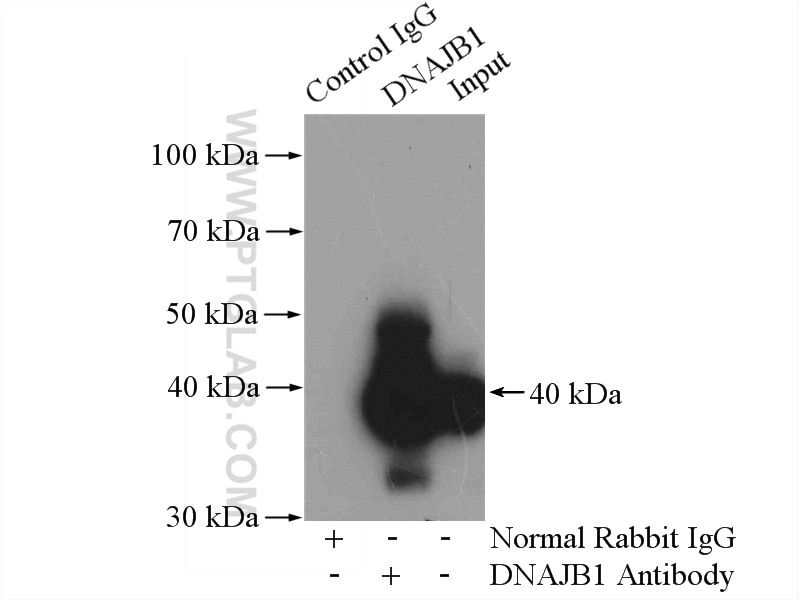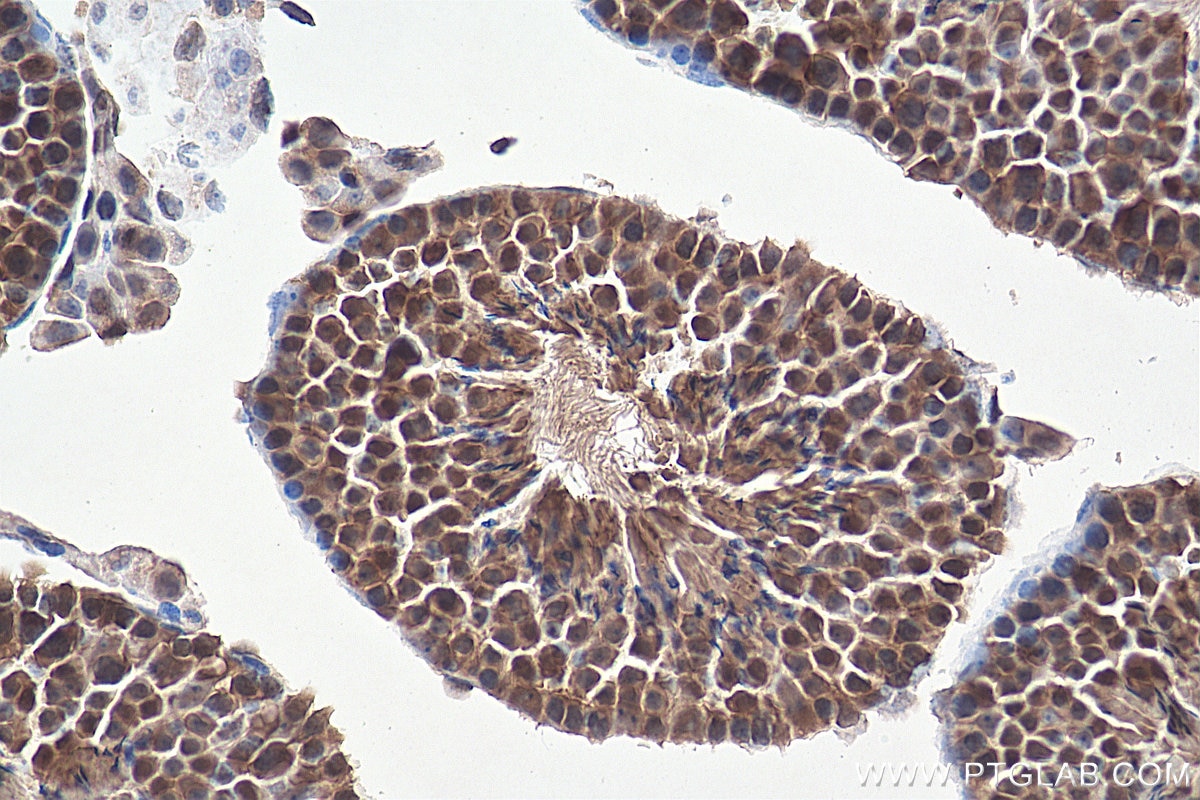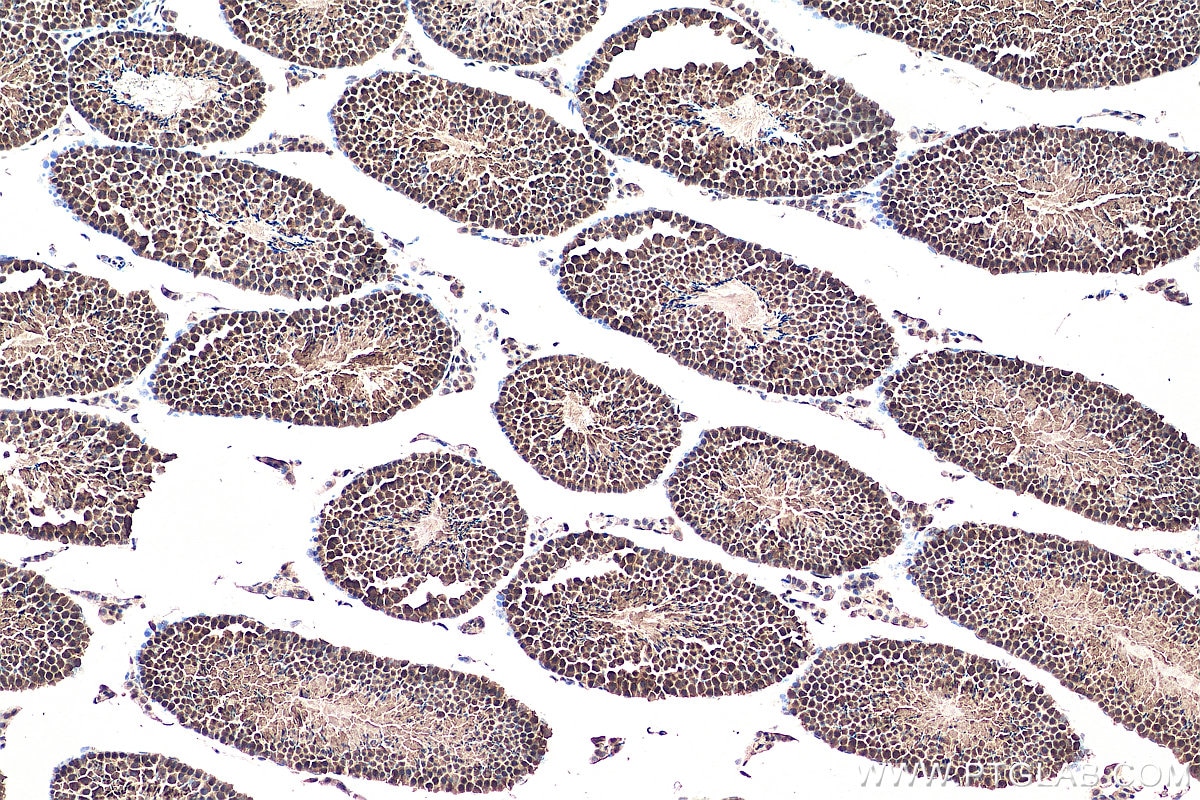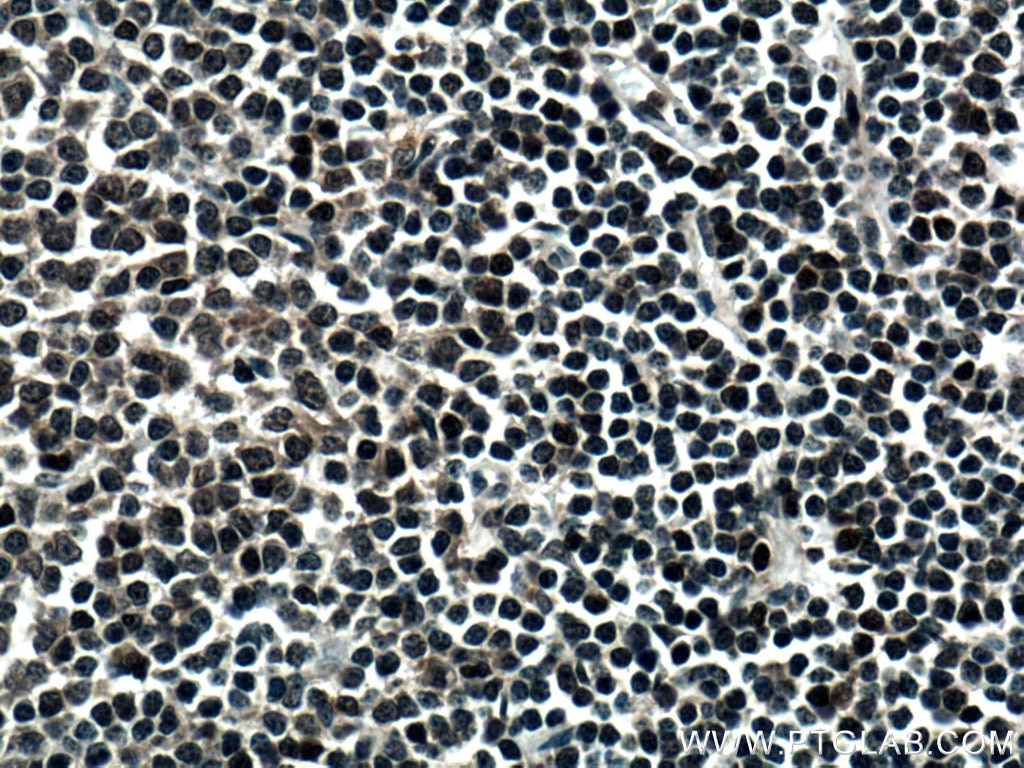Validation Data Gallery
Tested Applications
| Positive WB detected in | HeLa cells, mouse liver tissue, mouse lung tissue, rat lung tissue, rat liver tissue, C2C12 cells, C6 cells |
| Positive IP detected in | mouse lung tissue |
| Positive IHC detected in | human oesophagus cancer tissue, human lymphoma tissue, mouse testis tissue Note: suggested antigen retrieval with TE buffer pH 9.0; (*) Alternatively, antigen retrieval may be performed with citrate buffer pH 6.0 |
| Positive IF/ICC detected in | HeLa cells |
| Positive FC (Intra) detected in | HeLa cells |
Recommended dilution
| Application | Dilution |
|---|---|
| Western Blot (WB) | WB : 1:5000-1:50000 |
| Immunoprecipitation (IP) | IP : 0.5-4.0 ug for 1.0-3.0 mg of total protein lysate |
| Immunohistochemistry (IHC) | IHC : 1:50-1:500 |
| Immunofluorescence (IF)/ICC | IF/ICC : 1:200-1:800 |
| Flow Cytometry (FC) (INTRA) | FC (INTRA) : 0.40 ug per 10^6 cells in a 100 µl suspension |
| It is recommended that this reagent should be titrated in each testing system to obtain optimal results. | |
| Sample-dependent, Check data in validation data gallery. | |
Published Applications
| KD/KO | See 4 publications below |
| WB | See 30 publications below |
| IF | See 1 publications below |
Product Information
13174-1-AP targets DNAJB1 in WB, IHC, IF/ICC, FC (Intra), IP, ELISA applications and shows reactivity with human, mouse, rat samples.
| Tested Reactivity | human, mouse, rat |
| Cited Reactivity | human, mouse, rat |
| Host / Isotype | Rabbit / IgG |
| Class | Polyclonal |
| Type | Antibody |
| Immunogen | DNAJB1 fusion protein Ag3830 相同性解析による交差性が予測される生物種 |
| Full Name | DnaJ (Hsp40) homolog, subfamily B, member 1 |
| Calculated molecular weight | 340 aa, 40 kDa |
| Observed molecular weight | 37-40 kDa |
| GenBank accession number | BC019827 |
| Gene Symbol | DNAJB1 |
| Gene ID (NCBI) | 3337 |
| RRID | AB_2230742 |
| Conjugate | Unconjugated |
| Form | Liquid |
| Purification Method | Antigen affinity purification |
| UNIPROT ID | P25685 |
| Storage Buffer | PBS with 0.02% sodium azide and 50% glycerol pH 7.3. |
| Storage Conditions | Store at -20°C. Stable for one year after shipment. Aliquoting is unnecessary for -20oC storage. |
Background Information
DNAJB1 is a member of the heat shock 40 protein family and has been involved in a variety of cellular processes, including the proteasome pathway, endoplasmic reticulum stress and viral infection. DNAJB1-PRKACA gene fusions have been considered diagnostic for fibrolamellar hepatocellular carcinoma.
Protocols
| Product Specific Protocols | |
|---|---|
| WB protocol for DNAJB1 antibody 13174-1-AP | Download protocol |
| IHC protocol for DNAJB1 antibody 13174-1-AP | Download protocol |
| IF protocol for DNAJB1 antibody 13174-1-AP | Download protocol |
| IP protocol for DNAJB1 antibody 13174-1-AP | Download protocol |
| Standard Protocols | |
|---|---|
| Click here to view our Standard Protocols |
Publications
| Species | Application | Title |
|---|---|---|
Nat Cell Biol Caspase-2 is a condensate-mediated deubiquitinase in protein quality control | ||
Dev Cell Nuclear import carrier Hikeshi cooperates with HSP70 to promote murine oligodendrocyte differentiation and CNS myelination | ||
Mol Ther Nucleic Acids Age-associated changes in microglia and astrocytes ameliorate blood-brain barrier dysfunction | ||
Int J Mol Sci PGC1α Promotes Cisplatin Resistance in Ovarian Cancer by Regulating the HSP70/HK2/VDAC1 Signaling Pathway. | ||
Front Mol Neurosci Inhibition of Heat Shock Protein 90 by 17-AAG Reduces Inflammation via P2X7 Receptor/NLRP3 Inflammasome Pathway and Increases Neurogenesis After Subarachnoid Hemorrhage in Mice. |
